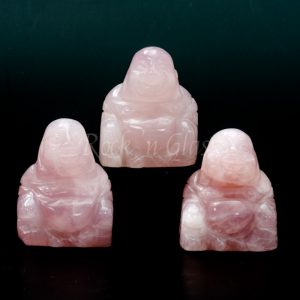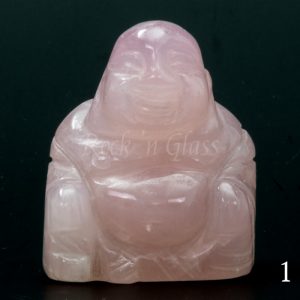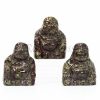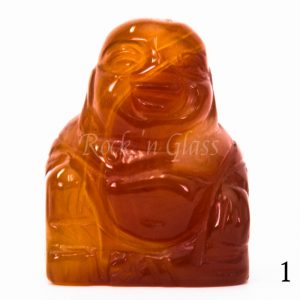Buddha Rose Quartz
$15.00
SIZE: 1.5″
ROSE QUARTZ
Rose Quartz opens the heart and awakens unconditional love.
Rose Quartz is a pale pink to rose variety of Quartz. The color is caused by trace amounts of titanium, iron, and manganese in the material. It is a stone of the heart, a stone of unconditional love. It fosters love of all kinds, love of family, friends, and romantic love. It has strong feminine energy. This stone carries a soothing energy that fosters empathy, reconciliation, and forgiveness. It lowers stress and clears out negative emotions such as anger, jealousy, and resentment. It fosters healing of the heart and cleansing of the heart chakra. It enhances self-affirmation and attracts love. It evokes empathy, reconciliation, and forgiveness. It is associated with the heart chakra and the astrological signs Libra and Taurus.
Price is for 1 piece. Multiple pieces are shown to demonstrate how no two are alike, differing in both size & shape.
TALES OF THE BUDDHA
Buddha’s Life
The Buddha is known by many names including Gautama Buddha, Siddhartha Gautama, Shakyamuni Buddha, or simply the Buddha. The Buddha was born in what is now known as Lumbini, Nepal to a Hindu family of the ruling class. His father was either a prince or an elected leader of the area. His mother, Maya, was known as a princess. He lived between 558 B.C.E. and 400 B.C.E. which was a time of great Vedic philosophical debate.
In the earliest texts, the Buddha was not depicted as omniscient, although his story is surrounded with tales of miracles and supernatural events. It is said that his mother dreamed that an elephant entered her side and implanted the seed of his being, and that his birth was painless. He was born a fully transcendent being with no need to sleep or eat. He was said to be able to suppress karma because every act was completely synchronous with the universe.
He spent his early life as a prince. He knew nothing of pain or suffering or death or illness. He was surrounded by luxuriousness.
At 29, his mother took him on a trip to visit his subjects, and he learned the first time about the reality of suffering in the world. He saw sick and dying people on his journey and it changed his perspective of the world. He left his life as a member of the ruling class and became an ascetic. For many years, he lived as a wandering mendicant who deprived himself of all things most humans need to survive.
He then began learning yogic meditation practices which made him realize that Nirvana could not be reached by austerity alone. He continued to deepen his meditative state until one day he sat beneath the Bhodhi tree and vowed to never leave until he reached enlightenment. He meditated for 49 days and finally reached enlightenment and entered the state of nirvana. He discovered the truths that were the foundation of the Eightfold Path and the Four Noble Truths. He chose to remain in the world and spent the rest of his life as a teacher.
He taught the Middle Way or Path of moderation. His goal was to put an end to suffering by avoiding the extremes of self-mortification and self-indulgence.
Schools of Buddhist Thought
Theravada
Theravada is the oldest of the Buddhist traditions. It is known as the “ancient way” or “the teaching of the elders.” It teaches that every person can become arhat or fully enlightened by following the Eightfold Path.
Mahayana
Mahayana, the most popular form of Buddhism in modern times, is the “great vehicle.” It recognizes that all beings are capable of enlightenment, and that some who could disappear into nirvana choose to remain to help others reach that goal. It is the most popular form of Buddhism in Japan, Nepal, China, Tibet, and Korea. The heart sutra is a Mahayana text.
Vajrayana
Vajrayana is sect of the Mahayana tradition. It is known as “the way of the diamond. It is an esoteric practice that uses tantric methods. It is sometimes called the “vehicle of the thunderbolt” which refers to the tantric methodology. Its followers believe that the other schools of practice take many lifetimes to perfect while Vajrayana can achieve enlightenment in one lifetime. It is focused on meditation practices. Tibetan Buddhism is a form Of Mahayana with some of the teachings of Vajrayana.
Zen
Zen is a form of the Mahayana-Vajrayana tradition. Its most important aspect is mediation. It was first developed in China where it was known as Chan. In Japan, Chan practices became known as Zen.
Important Concepts in Buddhist Philosophy
Eightfold Path
The Eightfold Path is the Middle Way. It is the path to liberation from samsara. It is the path to nirvana. It requires the aspirant to follow the practices of: right view; right resolve or intention; right speech; right conduct or action; right livelihood; right effort; right mindfulness; and right concentration or samadhi. There is a threefold division into moral virtues which include right speech, right action, and right effort; meditation which includes right effort, right mindfulness, and right concentration or samadhi; and insight or wisdom which includes right view and right resolve.
Four Noble Truths
The Four Noble Truths are the basic doctrine of Buddhism. They are: all life is suffering, the cause of suffering is ignorant desire, this desire can be destroyed, and the means to this is the Eightfold Path.
Karma
Karma is a Sanskrit word that is used in Hinduism, Buddhism, Jainism, Taoism, and Sikhism. It is the sum of a person’s actions in this and previous lives. It is closely tied to the concept of rebirth or reincarnation. The law of karma requires that each action has a reaction, that there is a causal connection and effect from one’s action in life that carries through all lives until one is freed from the cycle of birth and rebirth.
Middle Way or Path
This is the path to enlightenment. It avoids the extremes of sensual self-indulgence and self-mortification.
Nirvana
Nirvana is a transcendent state in which there is neither suffering nor desire. There is no sense of self in the state of nirvana which is the highest state of consciousness. It is a complete release from the laws of karma and the cycle of birth, death, and rebirth. It is the goal of Buddhism and complete freedom from all desire and attachment.
Samsara
Samsara is a Sanskrit word that means “wandering” or “world” with the connotation of cyclic circuitous change. In all eastern religions, including Buddhism and Hinduism, it refers to the cycle of death and rebirth to which life in the material world is bound. The concept of reincarnation and the cycles of life through birth, death, and rebirth arose in both ancient India and ancient Greece. In the Buddhist and Hindu religions, one remains bound in samsara until release upon enlightenment.
Important Figures in Buddhism
Amitabba Buddha
This is the aspect of the Buddha called upon when seeking entry to heavenly realms where enlightenment is easier to achieve.
The Buddha
The original incarnation of the enlightened one who was born a prince and reached enlightenment under the bodhisattva tree.
Dalai Lama
The Dalai Lama is the leader of the Tibetan Buddhist tradition. The current Dalai Lama, Tenzin Gyatso, is the fourteenth in a line of monastic leaders going back to 1394. He fled from Tibet in 1959 because of concern that his life was in danger after Tibet was overtaken by China. He lives in exile from his native land in Daramshala, India with many other refugees from Tibet. He speaks to the world about the plight of the Tibetan people and the need for peace in the world. He was awarded the Nobel Peace Prize in 1989.
Hotei
Hotei was a monk from the Chan/Zen school of thought. He was known for his jolly nature and sense of humor, and is often depicted laughing or smiling with his hands held out to the world. His figure appears frequently in temples and in pop culture as the “Laughing Buddha.”
King Asoka (or Ashoka)
King Asoka, a powerful emperor from approximately 250 B.C.E., controlled all of modern India, Nepal, Bangladesh, Pakistan, and Afghanistan. After a devastating war, he became a Buddhist devotee and renounced all violence. His stable regime allowed great expansion of the Buddhist doctrine during his lifetime
Kwan (or Kuan) Yin
Kwan Yin is the most important female figure in the Buddhist religion although in some sects she is interchangeably both male and female. She has been described as “she who hears the cries of the world.” She is known as the goddess of compassion and is the guardian of all. She is said to be filled with compassion for all living things. She is also important in Taoism and Confucianism.
Maha Pajapati Gotami
Maha Pajapati Gotami was the aunt and stepmother of the historic Buddha.
Maya Devi
This is the mother of the historical Buddha who died within seven days of his birth and waited to greet him as he left his physical body.
Medicine Buddha
Medicine Buddha is the healing nature of the Buddha. Meditation on this aspect is said to help overcome physical and mental illness.
Moggallana
Moggallana was one of the monks who followed the historical Buddha. He was known for his supernatural skills such as reading minds, traveling at the speed of light, and walking on water.
Nagarjuna
Nagarjuna was an Indian philosopher and founder of the Mahayana school of Buddhist thought. He is sometimes referred to as the second Buddha. He taught the interconnected nature of all things
Sama-sam-buddha
This is the title of any individual who rediscovers and teaches the masses the means to become enlightened.
Sariputta
Sariputta was the first disciple of the historic Buddha. He was known for his wisdom and patience.
Sujata
Sujata was a woman who saved the Buddha’s life before his enlightenment. He was near death from starvation, and she gave him rice.
Tara
Tara is the mother of liberation. She is a goddess who helps bring success in work and achievements in the world.
Vishnu
Vishnu is the Hindu god of preservation. Krishna was one of his avatars. He is considered by Buddhists to have been an incarnation of the Buddha.
| Gemstone Carved Figurines | Rose Quartz Buddha 1, Rose Quartz Buddha 2, Rose Quartz Buddha 3 |
|---|
Be the first to review “Buddha Rose Quartz” Cancel reply
Related products
Deity Carvings
Deity Carvings
Deity Carvings
Deity Carvings
Deity Carvings
Deity Carvings





























Reviews
There are no reviews yet.